The effect of prophylactic polishing pastes on surface roughness of indirect restorative materials
- PMID: 24729757
- PMCID: PMC3960528
- DOI: 10.1155/2014/962764
The effect of prophylactic polishing pastes on surface roughness of indirect restorative materials
Abstract
The purpose of this study was to evaluate the influence of prophylactic polishing pastes (PPP; Detartrine (DT), Topex (TP)) on surface roughness (R(a)) of indirect composites (IRC; Tescera (TES), Gradia (GRD), and Estenia C&B (EST)), a glass ceramic (Empress 2 layering (E2)), and a leucite reinforced glass ceramic (Empress Esthetic (EE)) with two different (glazed (G); polished (P)) surface preparations. A total of 90 IRC and 120 ceramic discs, 8 mm in diameter and 2 mm thick, were prepared. E2 and EE specimens were randomly divided into two groups (n = 30). One group was glazed (GE2; GEE), while the other group was polished (PE2; PEE) the same as the IRCs. The specimens in each group were subsequently divided into three subgroups: control (C), DT, and TP. R(a) (μm) was evaluated with a profilometer. Data were analyzed by Kruskal Wallis, followed by the Dunn's multiple comparison tests (P < 0.05). DT and TP resulted in significant surface roughening for TES, GRD, and EST, while no significant differences were detected between DT and TP (P > 0.05). PE2 and PEE were not affected by DT or TP (P > 0.05), while GE2 and GEE exhibited significant roughening after TP (P < 0.05). Surface roughness of IRCs and glazed ceramics can be affected by PPP applications.
Figures
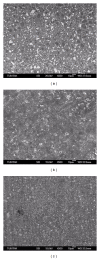
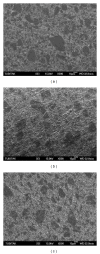

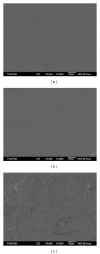
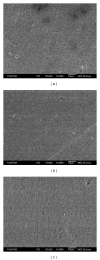
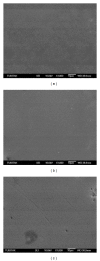

Similar articles
-
In vitro 2D and 3D roughness and spectrophotometric and gloss analyses of ceramic materials after polishing with different prophylactic pastes.J Prosthet Dent. 2020 Dec;124(6):787.e1-787.e8. doi: 10.1016/j.prosdent.2020.05.040. Epub 2020 Oct 9. J Prosthet Dent. 2020. PMID: 33041073
-
Evaluation of the effect of a home-bleaching agent on the surface characteristics of indirect esthetic restorative materials: part I--roughness.J Contemp Dent Pract. 2014 May 1;15(3):326-30. doi: 10.5005/jp-journals-10024-1537. J Contemp Dent Pract. 2014. PMID: 25307815
-
Effect of bleaching on microhardness of esthetic restorative materials.Oper Dent. 2011 Mar-Apr;36(2):177-86. doi: 10.2341/10-078-L. Epub 2011 Jun 24. Oper Dent. 2011. PMID: 21702674 Clinical Trial.
-
The effect of two polishing pastes on the surface roughness of bis-acryl composite and methacrylate-based resins.J Prosthet Dent. 2002 Nov;88(5):527-32. doi: 10.1067/mpr.2002.129335. J Prosthet Dent. 2002. PMID: 12474004
-
Correlation of surface texture with the stainability of ceramics.J Prosthet Dent. 2014 Aug;112(2):306-13. doi: 10.1016/j.prosdent.2013.09.028. Epub 2014 Jan 29. J Prosthet Dent. 2014. PMID: 24484857
Cited by
-
Influence of Toothbrush Abrasion and Surface Treatments on Roughness and Gloss of Polymer-Infiltrated Ceramics.Polymers (Basel). 2021 Oct 27;13(21):3694. doi: 10.3390/polym13213694. Polymers (Basel). 2021. PMID: 34771250 Free PMC article.
-
Nine prophylactic polishing pastes: impact on discoloration, gloss, and surface properties of a CAD/CAM resin composite.Clin Oral Investig. 2019 Jan;23(1):327-335. doi: 10.1007/s00784-018-2440-z. Epub 2018 Apr 16. Clin Oral Investig. 2019. PMID: 29658069
-
The Impact of Prophylactic Polishing Pastes on the Surface Roughness, Color, and Stain Resistance of CAD/CAM Restorative Materials.Dent J (Basel). 2025 May 15;13(5):212. doi: 10.3390/dj13050212. Dent J (Basel). 2025. PMID: 40422632 Free PMC article.
-
A study on the discoloration of different dental porcelain systems.Eur Oral Res. 2023 Sep 6;57(3):115-121. doi: 10.26650/eor.20231033050. Eur Oral Res. 2023. PMID: 37929221 Free PMC article.
References
-
- Shimane T, Endo K, Zheng JH, Yanagi T, Ohno H. Wear of opposing teeth by posterior composite resins: evaluation of newly developed wear test methods. Dental Materials Journal. 2010;29(6):713–720. - PubMed
-
- Gordan VV, Patel SB, Barrett AA, Shen C. Effect of surface finishing and storage media on bi-axial flexure strength and microhardness of resin-based composite. Operative Dentistry. 2003;28(5):560–567. - PubMed
-
- Bollen CM, Lambrechts P, Quirynen M. Comparison of surface roughness of oral hard materials to the threshold surface roughness for bacterial plaque retention: a review of the literature. Dental Materials. 1997;13(4):258–269. - PubMed
-
- Brambilla E, Cagetti MG, Gagliani M, Fadini L, García-Godoy F, Strohmenger L. Influence of different adhesive restorative materials on mutans streptococci colonization. The American Journal of Dentistry. 2005;18(3):173–176. - PubMed
-
- Ono M, Nikaido T, Iked M, et al. Surface properties of resin composite materials relative to biofilm formation. Dental Materials Journal. 2007;26(5):613–622. - PubMed
MeSH terms
Substances
LinkOut - more resources
Full Text Sources
Other Literature Sources
Research Materials

